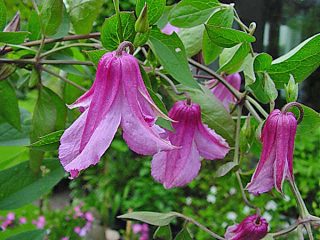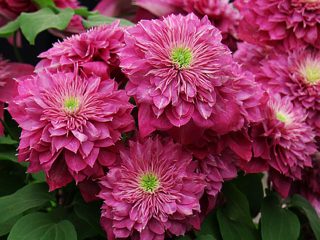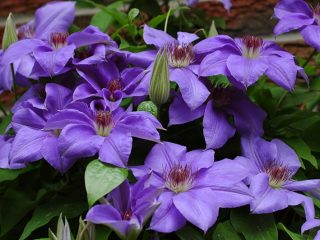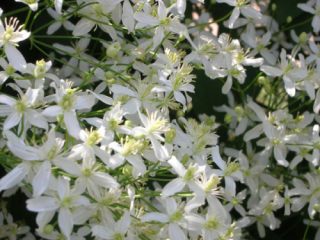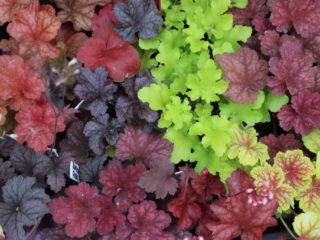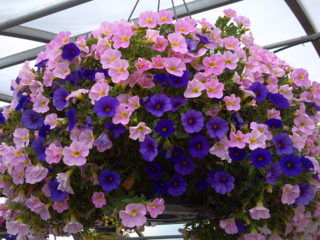Content
Yarrow ptarmika is a culture related to the Asteraceae. It has medicinal properties and decorative flowers. Initially, the plant was the most unremarkable, but with the development of selection, everything changed, and yarrow ptarmika spread throughout parks and gardens. Bushes can give the landscape an interesting look and help highlight a flowerbed or veranda.
History of appearance
This species appeared in 1542. The literature does not mention how it was obtained and who its predecessors were.
Description of yarrow ptarmika
Depending on external factors, the ptarmika may have a different structure. For example, on moist soils, yarrow forms a single stem with a small number of branches; it reaches a length of 100 cm. In dry climates, ptarmika has the appearance of a dwarf bush about 30 cm high. The central shoot is prone to growth, which is why the crop looks very lush.
A distinctive feature of Ptarmika is the elongated narrow leaves - in related species they are pinnately patterned. The edges of the plate are outlined by teeth, which have a larger diameter the closer they are to the top. The outer surface is more often with fluff than without it. The leaf length is 3-5 cm, width – 2-4 mm.
The upper part of the stem also has pubescence. During the budding period, inflorescences are formed on it, consisting of a small number of baskets. The diameter of one inflorescence is about 8 cm. White flowers run along the edges of the yarrow ptarmika, while in the middle they are yellow.
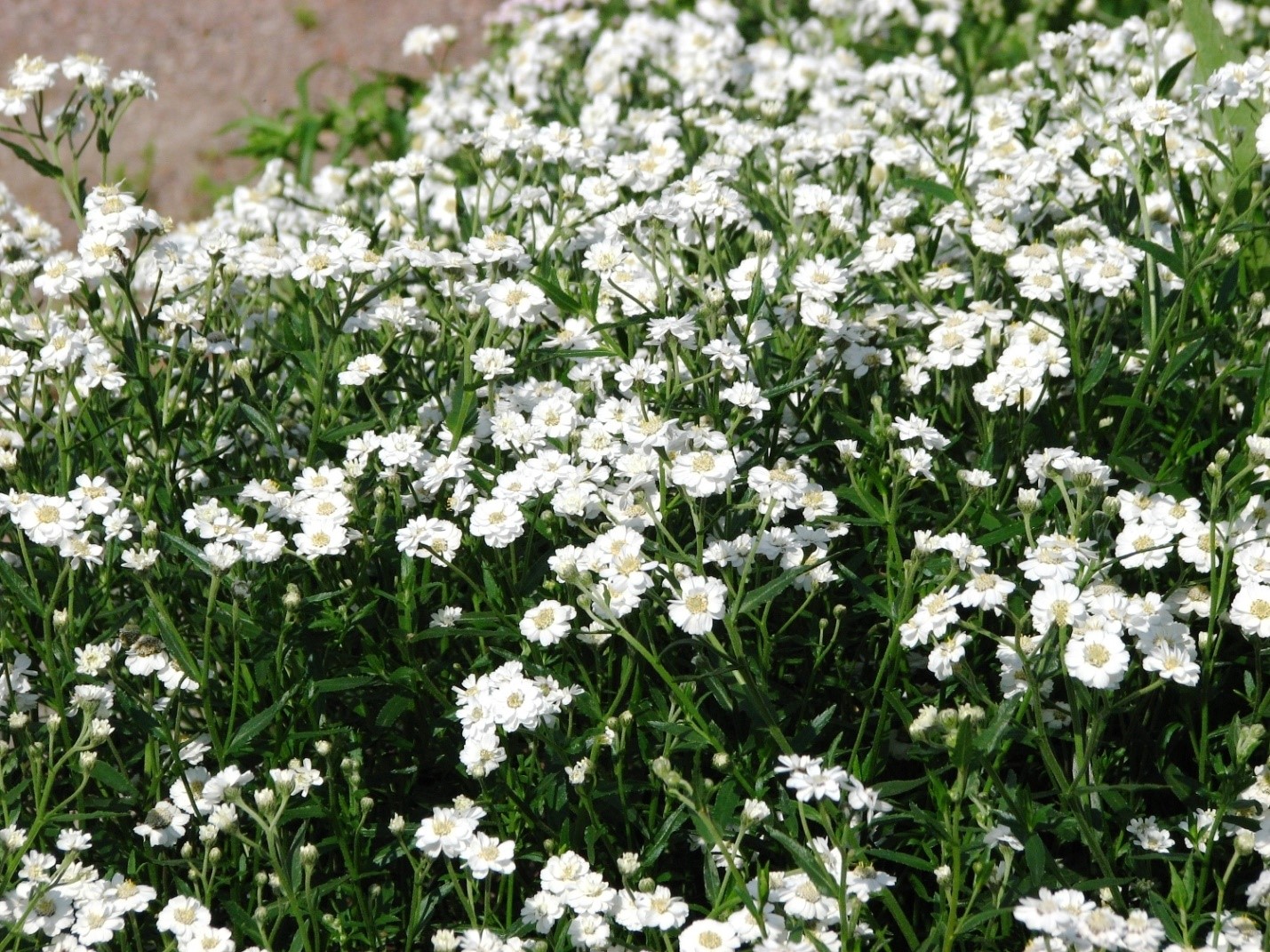
After the growing season, testes are formed
Ptarmika blooms in early summer, the flowers last until the first ten days of October. Seeds ripen at different times, depending on the climate and variety. The plant is ready for propagation from July to October.
The root system of a crop is always located close to the surface. It is represented by a central root core with a large number of fibrous branches. Thin processes extend from them. Part of the roots of the ptarmika goes underground and is capable of covering nearby areas.
Yarrow prefers moist areas and can withstand short periods of heat. In dry summers, the plant will lose its decorative effect if the owner does not water it. As for winter hardiness, ptarmika does not have problems with cold weather. In the Moscow region and the middle zone, the crop does not require shelter during the winter season.
Advantages and disadvantages
Yarrow is a picky plant that is easy to plant in any area.Gardeners from different countries are engaged in growing ptarmika.
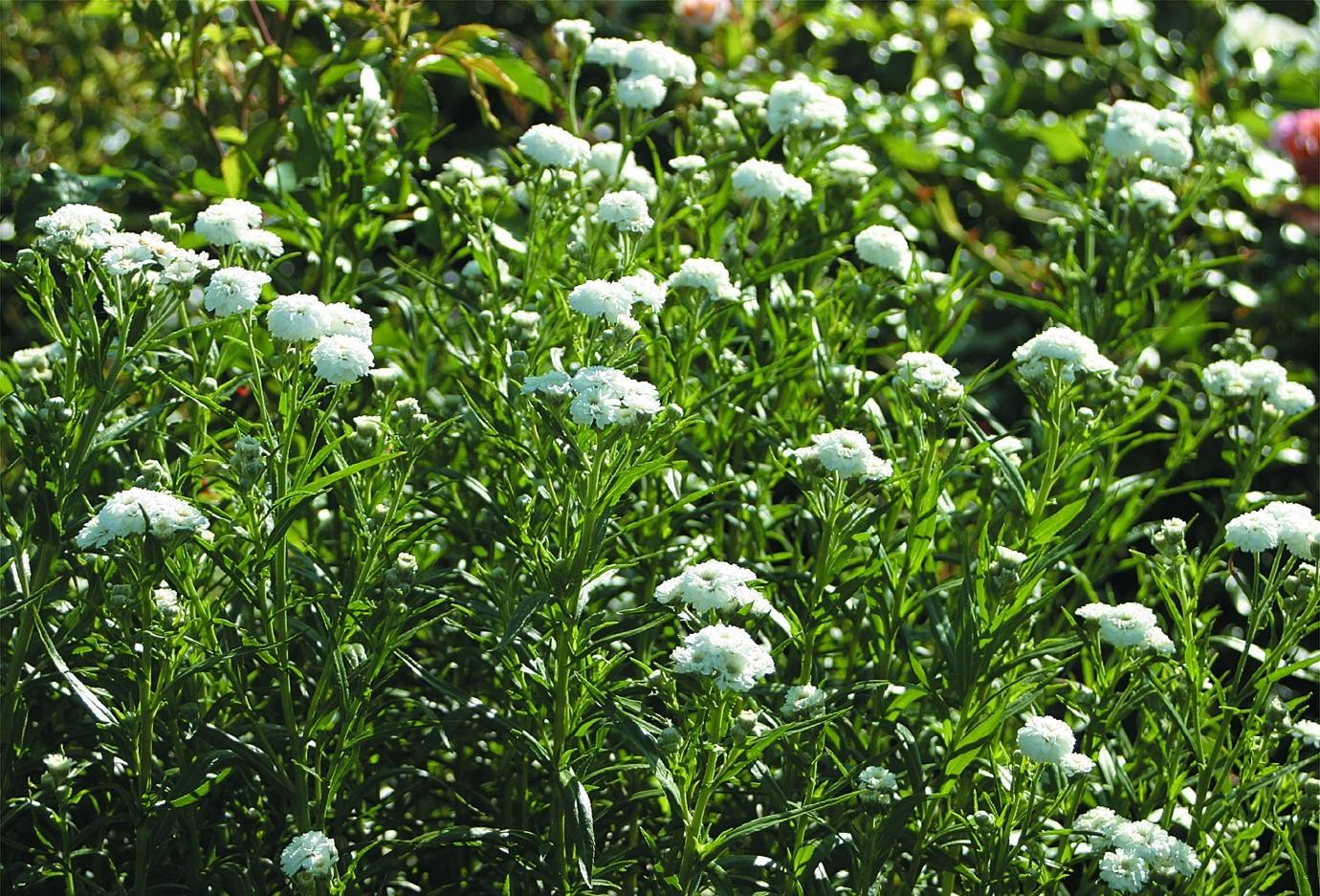
Yarrow bushes rarely get sick
Pros:
- honey plant;
- does not need protection in winter;
- adaptability to new conditions;
- simple and effective reproduction;
- long flowering.
Minuses:
- tendency to self-seeding;
- It is necessary to water frequently and trim periodically.
Planting yarrow ptarmika
You should not rely on unpretentiousness - the site should still be prepared. To do this, they dig it up several weeks in advance, mix garden soil with 200 g of wood ash and bury it before planting.
Seedlings need loose soil; drainage material is laid during planting. Then, holes (10 cm each) are dug on the leveled surface and the seedlings are placed inside. At the same time, it is important not to damage the earthen ball. Neighboring plants are placed at a distance from each other (30 cm). The roots must be sprinkled and the soil compacted after planting.
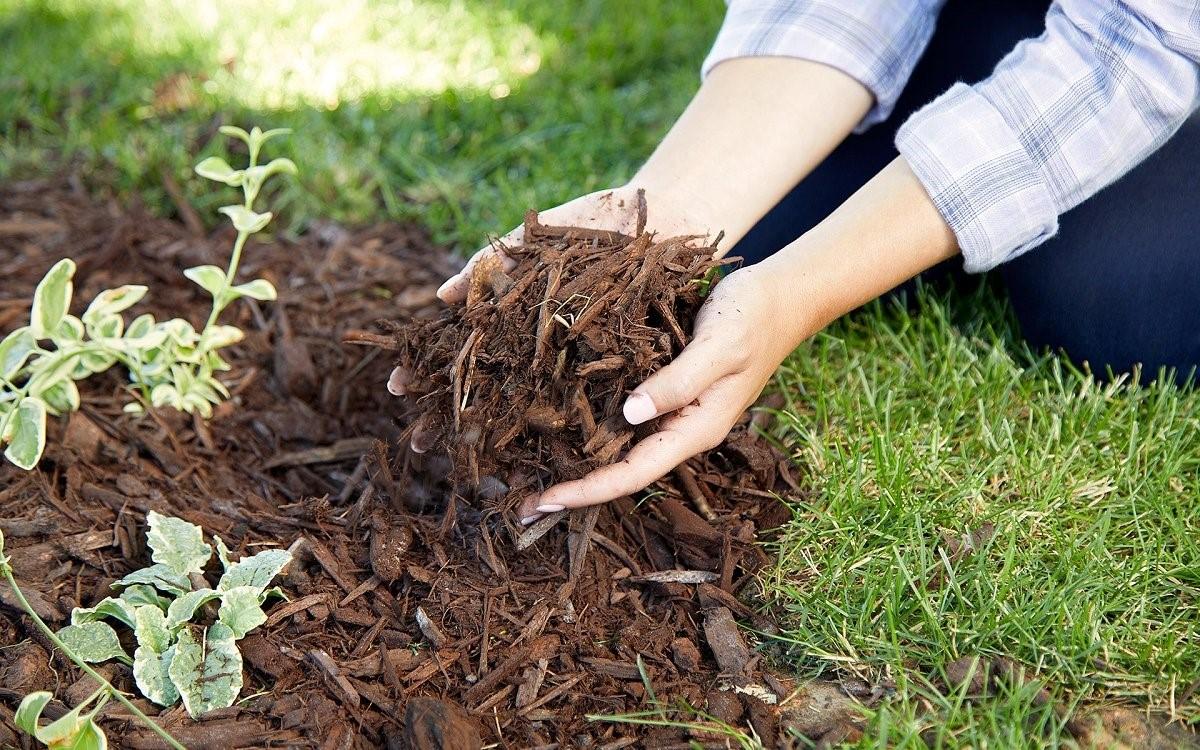
Mulch prevents the development of weeds and retains moisture
Caring for yarrow ptarmika
The culture is unpretentious, so even novice gardeners can cope with its cultivation. But a number of rules cannot be ignored, otherwise there can be no talk of any decorative effect:
- Weeding. The grass around the plantings is removed in a timely manner so that it does not take away nutrients, which may already be in short supply.
- Watering. Growing yarrow ptarmika in wet and dry climates is different.In dry areas, more time must be spent on hydration. In any case, the water must be warm (at least +16 degrees) and free of sediment. Water in the evening.
- Fertilizer. Nutritional supplements are applied the next year after planting - starting in spring. Gardeners recommend using ammonium nitrate; before budding, they feed it a second time, but this time with nitroammophos. Superphosphates are added for the third time to prepare the yarrow ptarmika for the coming winter.
- Shelter. The plant does not need protection. The exception is areas with little snow in winters.
- Trimming. In the spring, gardeners carry out sanitary cuttings. To enhance branching, pinching the upper shoots is allowed. Faded inflorescences are removed to avoid self-seeding. Every autumn the bushes are pruned, leaving 10 cm of stems.
Designers use it next to large contrasting flowers. Some summer residents prepare raw materials for decoctions from shoots.
Diseases and pests
Yarrow ptarmika has a stable immune system, so it rarely gets sick. Pests also do not cause trouble, with the exception of some insects:
- beet weevil;
- aphid;
- spider mite
Hexachlorocyclohexane is used to combat weevils. It is used on the soil, next to the plant. The yarrow itself is sprayed with chlorophos.
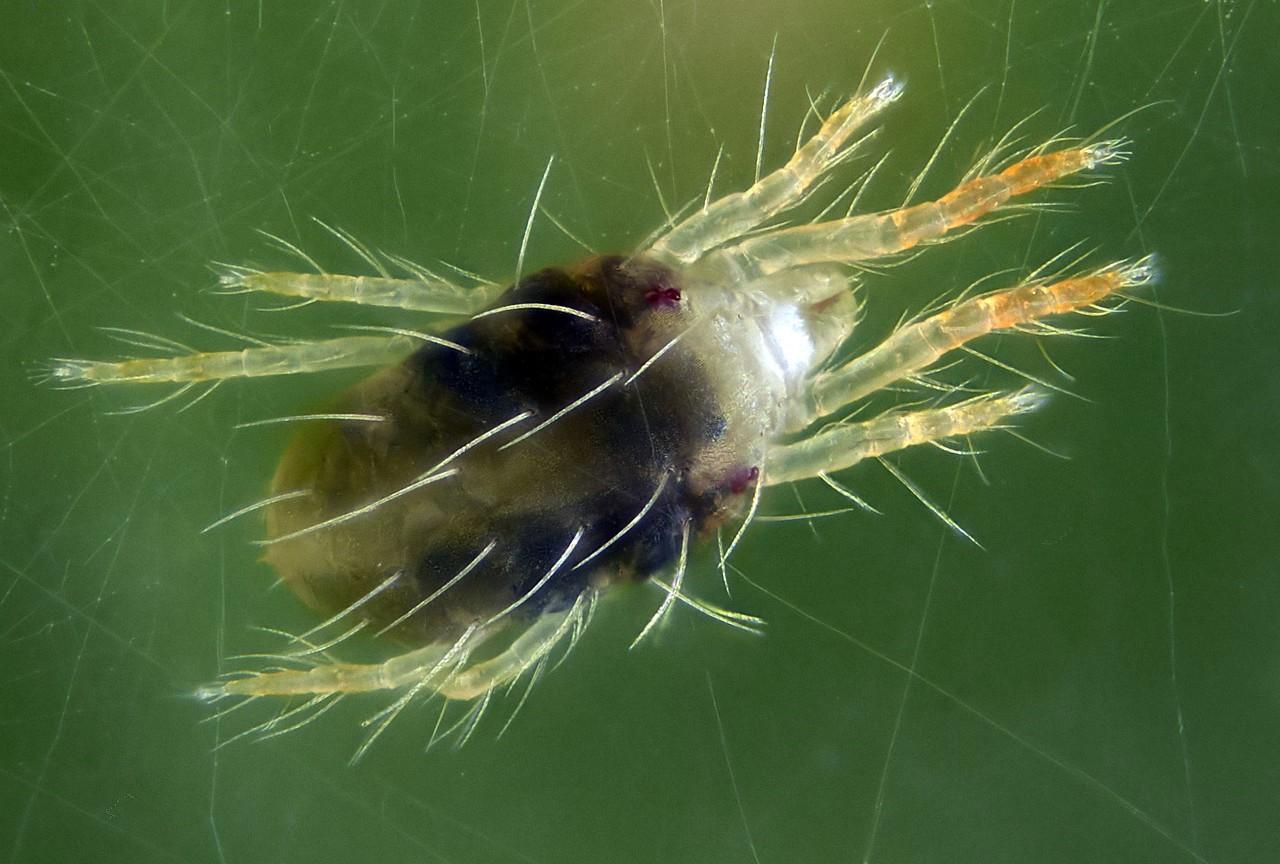
Phthalophos helps against aphids and spider mites
In heavy substrates, the root system of ptarmika may suffer. The lack of a drainage cushion on clay soils leads to rotting of the underground part, which manifests itself on the leaves - they curl and turn yellow.Yarrow is “reanimated” by transplantation followed by treatment with fungicides.
Reproduction methods
Yarrow ptarmika can be propagated by cuttings, division or seeds. If a bush is already grown on the site, the easiest way to get a daughter bush is by division.
The seed method is more labor-intensive, and species characteristics may be lost. Sowing is carried out this year, otherwise the material loses its viability.
Cuttings show good results. The technology is easier than propagation by seeds, but more difficult than division.
Yarrow ptarmika in landscape design
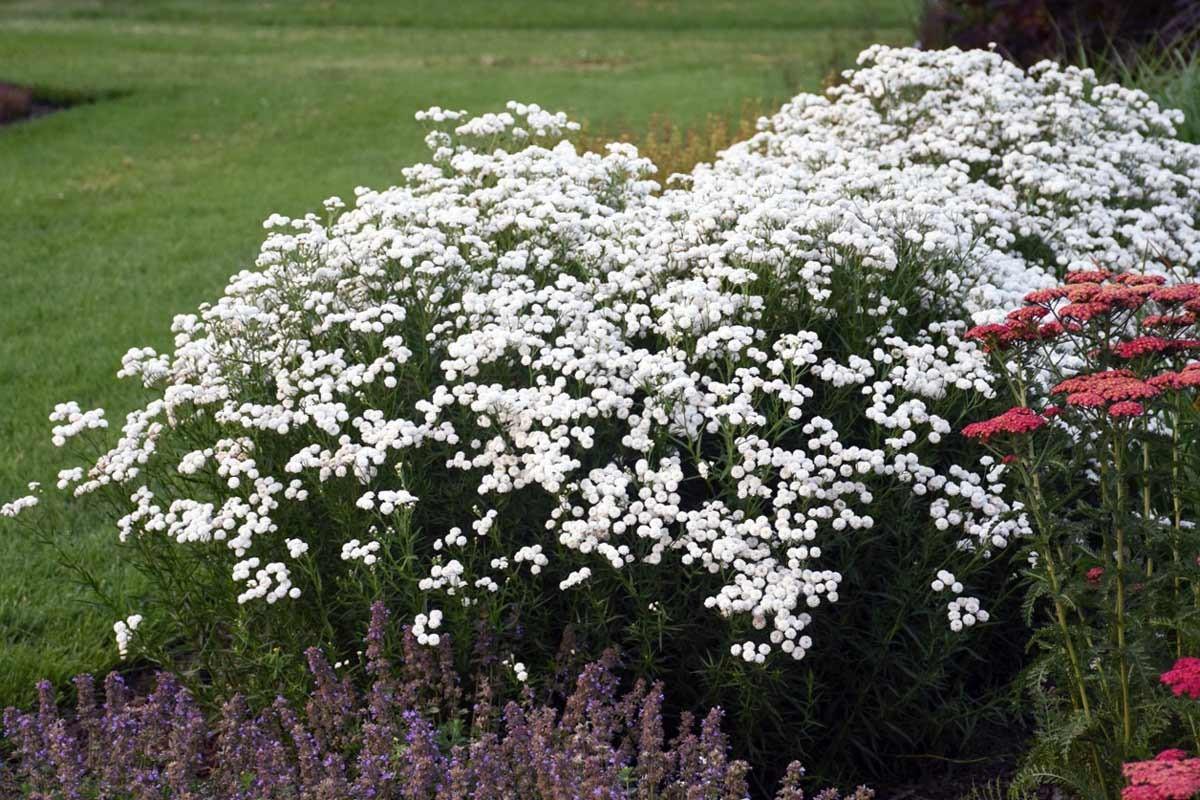
The plant looks great in mixborders, in company with other flowers.
Designers advise careful use of the qualities of yarrow - especially its tendency to grow. Neighboring crops must be persistent, otherwise the ptarmika will turn into a weed.
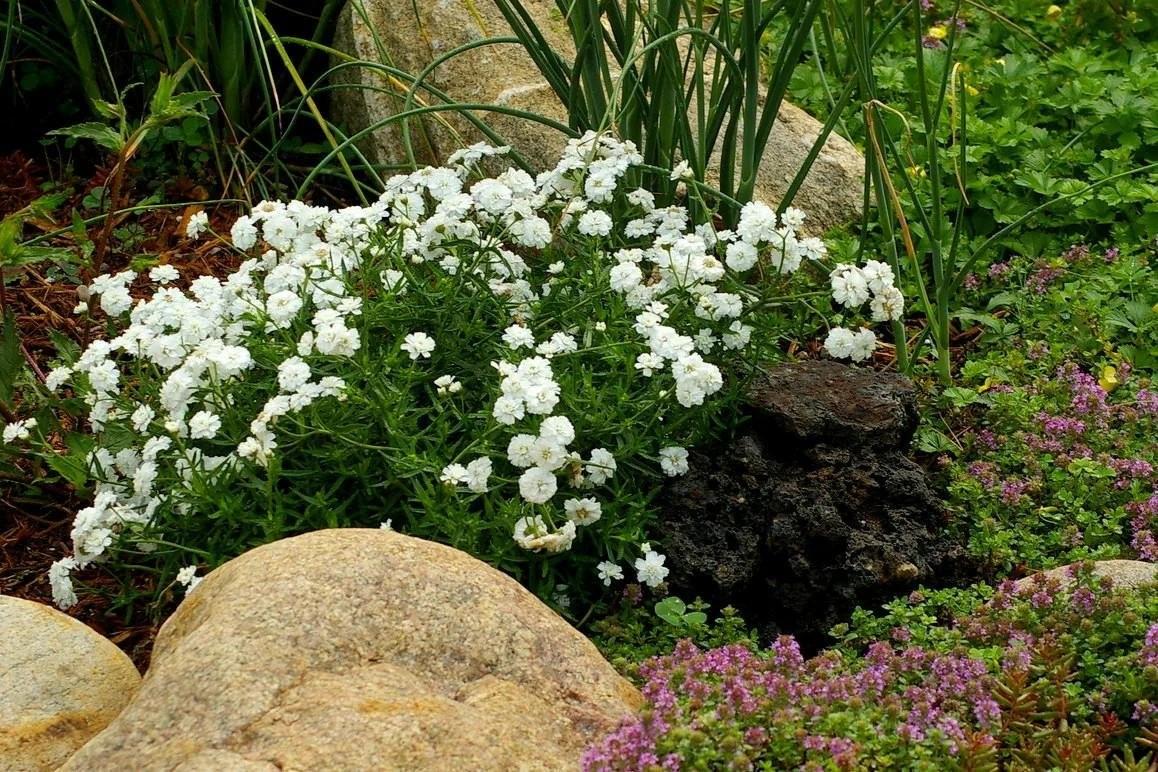
The flowerbed can be highlighted with beautiful stones

The spherical shapes of the plant look good
Conclusion
Yarrow ptarmica is a variety with unique leaves that is frost-resistant. The crop is grown for the purpose of beautifying park areas and private areas. It is undemanding when planting, but requires regular watering.
Reviews of yarrow ptarmika
